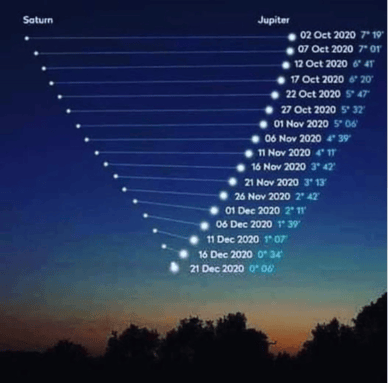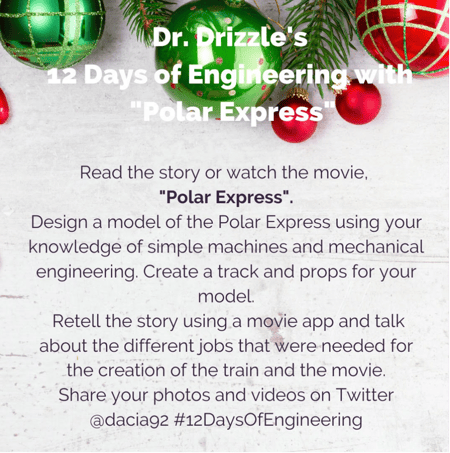As most of you prepare for the last week of school before the winter break, it is a perfect time to use STEM to keep your students engaged. I will share several of these great activities created by my STEMigo Dacia Penley Jones, known as Dr. Drizzle. If you have not yet met Dacia, she is a person you need to get to know and her STEM resources are STEMtastic!
Also, you have probably heard about the celestial show that will be happening on December 21st. Actually Jupiter and Saturn are moving together and on December 21st will be the closest they have been in 800 years. Many of our students are not I the habit of going outside to view the night sky, so this is a perfect reason to get them out there. The last time this event happened so that people could see it was in 1226, before telescopes were invented. To help your students and their families find Jupiter and Saturn, advise them to download the free app “Sky View Lite”. They can just point it to the sky and it identifies stars and planets.
The “Christmas star” will be visible all across the US, about 45 minutes after sunset, low in the sky. It may be viewed with the naked eye,but will be better viewed with binoculars and/or telescopes. Check with your local Astronomy Clubs to see if they are offering families viewing parties.

The planets are actually moving closer each day, so go out before December 21st to see if you spot them. On December 21st, Jupiter and Saturn will be a tenth of a degree apart at their closest. To help your students visualize this distance, that is about the width of a dime if you hold a dime at arm’s length, and even though they appear very close they are actually 400 million miles apart.
This event is called the great conjunction and is best spotted in the southwest sky just after sunset on December 21st. The 2 bright planets will appear consistently bright and will not twinkle like stars. To spot the great conjunction, look to the southwest sky just after sunset on Dec. 21. The two bright planets, which will appear consistently bright and not twinkling like stars, will be pretty low in the sky. The good news is that they’ll be viewable everywhere on the planet, so as long as the skies are clear, you’ll be good to go. You definitely won’t want to miss the show this time around; after Dec. 21, Jupiter and Saturn won’t be this close in the night sky until March 15, 2080. Check out sky watching tips from NASA.

About the author:
Dr. Cindy Moss is a nationally respected thought leader in STEM education and reform. Dr. Moss brings over 31 years experience in district leadership, classroom instruction and inquiry based learning to her work as a champion for STEM engagement and career & workforce readiness. Learn more about Dr. Moss here and follow her on Twitter at @STEMboss